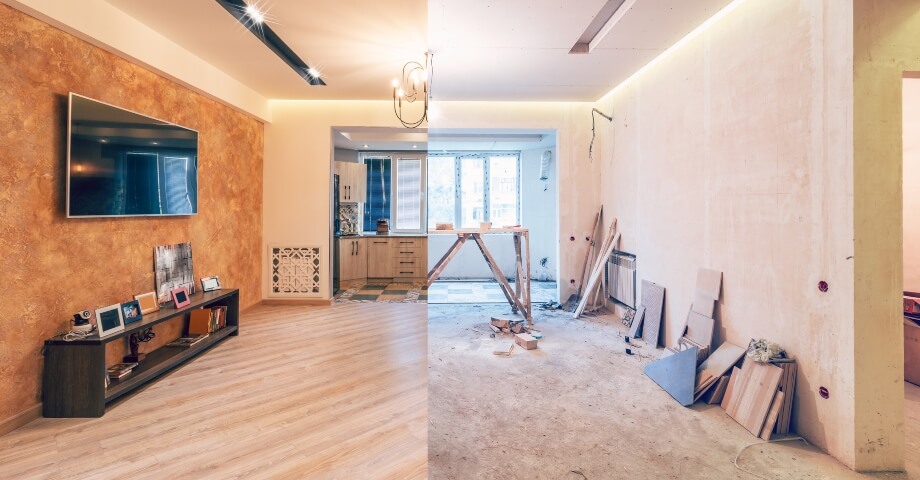
Suffice it to say that a lot of us have spent way more time indoors in 2020 than we expected to. More and more consumers are taking on a number of home improvement projects to enhance the space that they are now spending much more time in. Much of this process -- from inspiration and planning to product discovery and purchase -- is taking place online.
In the digital age, it comes as no surprise that folks are sharing their DIY home improvement projects online. In fact, social media sites like Instagram, Reddit, and Pinterest have seen an influx of before-and-after home improvement project photos that people have tackled during their time stuck at home.
How has stay at home impacted home improvement project sales?
To give you a better idea of what these trends look like more granularly, consider the following shopper insights that outline how consumers are approaching home improvement projects since the COVID-19 era.
According to a Bank of America study, more than 70 percent of homeowners have decided to spend their time and energy on home improvement projects this year—a trend that is expected to last well into 2021 and beyond.
Additionally, as more and more consumers are opting to leave cities for more rural locations, home improvement brands may be poised for a multi-year renaissance, as houses turn over and millennials buy up properties that need a little TLC. What’s more, a study by Houzz found that 79 percent of homeowners are thinking about new home improvement projects that would help them enjoy their houses more.
What kinds of projects are homeowners currently working on? So far, updating the house exterior is the most common project; 61 percent of homeowners have indicated that they’ve been either renovating the structure of their house itself or working on their gardens or patios.
Further, 34 percent of homeowners have taken steps to make their houses more environmentally friendly. This trend is even more pronounced among younger folks: 50 percent of millennials and members of Gen Z are making green improvements while only 6 percent of baby boomer households are doing the same.
By understanding these trends and developing strategies aimed to support these shifting sentiments, brands can delight their audiences and drive more sales.
How can brands capitalize on the home improvement trend?
Knowing that consumers are itching to spend money on home improvement, brands should be launching social media campaigns on visual discovery sites like Pinterest and Instagram that show their audience what is possible to create. To illustrate, a brand that sells home décor might post a picture of an outdoor patio someone built, complete with furniture, a fire pit, and string lights—all of which are available for sale online.
Once the ad has inspired the shoppers, they should be transitioned seamlessly to purchasing said items. A consumer might come across this ad while browsing Pinterest and decide that’s exactly what they want to do for their next project. There on Pinterest, they can access your digital storefront where all the products are pre-bundle and available at their preferred retailer. Before you know it, they have purchased all of the items without leaving their media platform.
Brands that sell tools can also benefit from these renovation-inspired moments, and create short how-to videos and guides that explain use cases for each tool and the kinds of projects each is suited for. To capitalize on the younger generation’s green-focused energy, brands can also compare the relative impact their products have on the environment vis-a-vis competitors, to encourage product switching in consumers that value reduction of their stay-at-home carbon footprint.
Use technology to make the online shopping experience as frictionless as possible
Getting the best results for home improvement brands starts with having connected retailer insights to understand exactly when and where your audience discovers products and prefers to buy them. With that data on hand, you can then build campaigns that cater to these preferences and route consumers to their favorite retailers—making it that much more likely they’ll complete a purchase.
Do you like shopper insights like those outlined in this post? Sign up for our newsletter, and never miss a beat.


